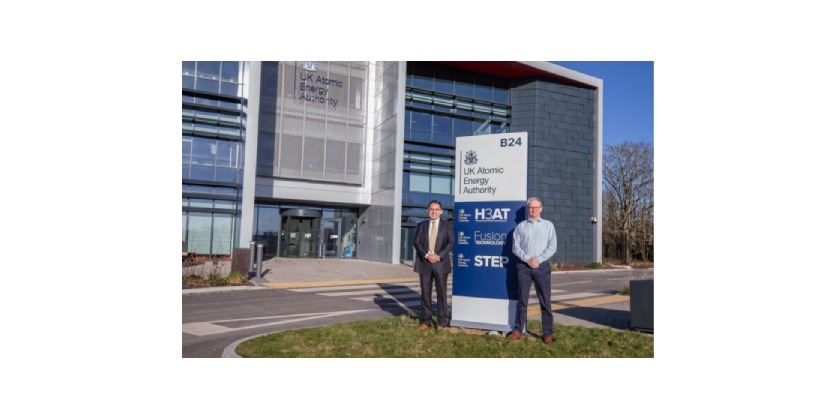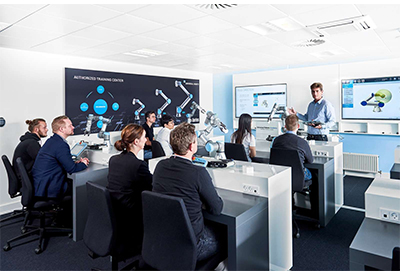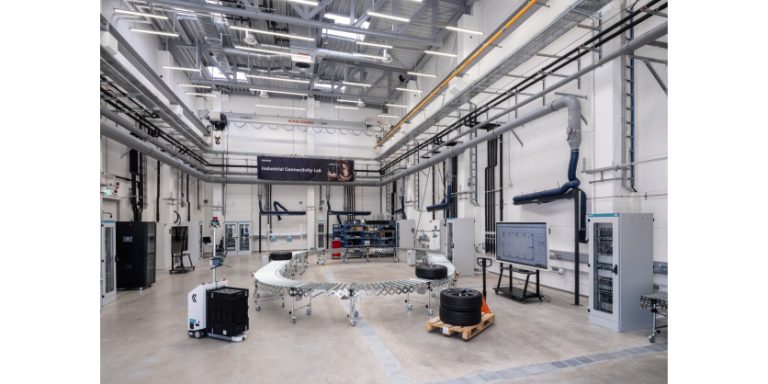United Kingdom Atomic Energy Authority and Canadian Nuclear Laboratories Partner to Accelerate Fusion Energy Development
March 11, 2024

Agreement complements the recent signing of a Memorandum of Understanding between the UK and Canada reflecting a new partnership on fusion energy
The United Kingdom Atomic Energy Authority (UKAEA) and Canadian Nuclear Laboratories (CNL), have signed a collaboration framework agreement to partner on the development of technologies in relation to the management of tritium, a fusion energy fuel.
This agreement complements the signing today of a Memorandum of Understanding by the UK’s Energy Secretary, Claire Coutinho and Canadian Minister of Energy and Natural Resources, Jonathan Wilkinson at the International Energy Agency’s (IEA) Ministerial meeting.
The UK-Canada Memorandum of Understanding enhances collaboration on key focus areas, including research and development, regulatory harmonisation, and skills and workforce development.
Stephen Wheeler, UKAEA Executive Director, said: “Fusion energy promises to be a safe, low carbon and sustainable part of the world’s future energy supply. Tritium is a key fuel for fusion energy, and developing a commercial scale fuel cycle for the handling and reprocessing of tritium is vital to the delivery of fusion as a clean energy source.”
“This collaboration between UKAEA and CNL brings together two of the largest and most experienced tritium research and operational teams in order to accelerate the development of new technologies for tritium processing,” added Wheeler.
A key focus of the partnership will be on hydrogen isotope management within the fusion fuel cycle safely removing, processing, and reinjecting fuel to the plasma in a continuous manner. Hydrogen isotope management is an essential part of the fusion fuel cycle – tritium needs to be separated from other hydrogen isotopes in the exhaust gas so that it can be recycled and reused as a fusion fuel. Tritium is rare in nature, so managing tritium efficiently is crucial to fusion energy’s commercial viability.
The first project under this collaboration will involve samples of candidate materials for isotope separation being analysed at both CNL’s facilities in Chalk River, Ontario, and UKAEA’s facilities in Culham, Oxfordshire.
“CNL has a proud history of working alongside the United Kingdom to advance clean energy technologies, and this agreement builds on that relationship, to pursue fusion technologies, a transformative clean energy solution for our respective countries,” commented Jeff Griffin, Vice-President, Science and Technology, CNL.
“For our part, CNL has extensive expertise in the safe operation of facilities, storage and management of tritium, capabilities that will be critically important to this collaboration. Overall, we are thrilled to work with such a talented and internationally respected team of researchers at the UKAEA, and we cannot wait to get started,” remarked Ian Castillo, Head of Hydrogen and Tritium Technologies, CNL.
The UK-Canada collaboration builds on the announcement of the UK-US Strategic Partnership on Fusion Energy in November 2023 and will support the UK’s £650 million Fusion Futures programme, which is ensuring the UK remains at the cutting-edge of innovation – with training opportunities and dedicated funding for fusion companies.
The UKAEA and CNL agreement establishes a framework in which the two organisations will conduct joint research projects, facilitate personnel secondments, share expertise for consultancy services, and work together to provide services to the fusion industry.
Both UKAEA and CNL facilities will also be leveraged in this partnership to advance tritium technologies required for fusion applications, including the design of tritium processing plants, tritium-compatible materials development, tritium breeder blanket technologies, tritium decontamination, and analytical equipment and the modeling of tritium handling processes.
About UK Atomic Energy Authority
United Kingdom Atomic Energy Authority (UKAEA) is the UK’s national organisation responsible for the research and delivery of sustainable fusion energy. It is an executive non-departmental public body, sponsored by the Department for Energy Security and Net Zero.
Fusion energy has great potential to deliver safe, sustainable, low carbon energy for generations to come. It is based on the same processes that power the Sun and stars, and would form part of the world’s future energy mix. Achieving this is a major technical challenge that involves working at the forefront of science, engineering, and technology.
UKAEA’s fusion machines include MAST-Upgrade (Mega Amp Spherical Tokamak) and the JET (Joint European Torus) research facility. JET’s operations were funded by the UK Government from 2021 until 31st December 2023. UKAEA is delivering the transition of JET from plasma operations to repurposing and decommissioning, on behalf of the UK Government. The insights gained from this process will contribute to the advancement of sustainable future fusion powerplants.
UKAEA is implementing the UK’s £650 million Fusion Futures Programme, the UK’s alternative programme to associating to Euratom R&T, to support the UK Fusion Strategy. The Programme entails establishing new facilities at UKAEA’s Culham Campus in Oxfordshire to facilitate the advancement of new technologies and expand fusion fuel cycle capabilities. The Programme aims to foster world-leading innovation while also stimulating general industry capacity through international collaboration and the development of future fusion power plants. Additionally, a fusion skills package will be introduced focusing on nurturing expertise across a spectrum of disciplines and levels. In 2021, UKAEA opened its Fusion Technology Facility near Rotherham in South Yorkshire, to develop and test materials and components for future fusion powerplants.
UKAEA also undertakes cutting edge work with academia, other research organisations and the industrial supply chain in a wide spectrum of areas, including robotics and materials.
More information: https://www.gov.uk/ukaea. Social Media: @UKAEAofficial
About fusion energy
When a mix of two forms of hydrogen (deuterium and tritium) is heated to form a controlled plasma at extreme temperatures – 10 times hotter than the core of the Sun – they fuse together to create helium and release energy which can be harnessed to produce electricity. There is more than one way of achieving this. UKAEA’s approach is to hold this hot plasma using strong magnets in a ring-shaped machine called a ‘tokamak’, and then to harness this heat to produce electricity in a similar way to existing power stations.
About CNL
As Canada’s premier nuclear science and technology laboratory, and working under the direction of Atomic Energy of Canada Limited (AECL), CNL is a world leader in the development of innovative nuclear science and technology products and services. This includes a long and extensive history in the development and deployment of technologies and systems to safely manage hydrogen isotopes, including deuterium and tritium. CNL operates a state-of-the-art Tritium Facility, licensed to handle large quantities of tritium, and another one-of-a-kind facility for technologies at the Chalk River Laboratories campus.
CNL is also expanding its presence in fusion as part of its clean energy program. Working with one of its key partners, Kyoto Fusioneering, CNL is currently exploring plans to establish an internationally-unique flexible fusion fuel cycle and demonstration platform at the Chalk River campus for national and international fusion communities’ involvement. This is in addition to a series of projects that CNL recently announced demonstrating its growing momentum in this emerging clean energy space, including partnerships with First Light Fusion and General Fusion with whom a MOU has been signed.
Guided by an ambitious corporate strategy known as Vision 2030, CNL fulfills three strategic priorities of national importance – restoring and protecting the environment, advancing clean energy technologies, and contributing to the health of Canadians.
By leveraging the assets owned by AECL, CNL also serves as the nexus between government, the nuclear industry, the broader private sector and the academic community. CNL works in collaboration with these sectors to advance innovative Canadian products and services towards real-world use, including carbon-free energy, cancer treatments and other therapies, non-proliferation technologies and waste management solutions.
For more information on CNL, including its various clean energy projects and programs, please visit www.cnl.ca.
More Information
Related Story
CNL Granted Licence Amendment for Chalk River Laboratories to Authorize Construction of an NSDF
In January 2024, the Canadian Nuclear Safety Commission (CNSC) announced the Commission’s decision to amend the licence for Chalk River Laboratories, authorizing Canadian Nuclear Laboratories (CNL) to construct a near surface disposal facility (NSDF) on the site.



